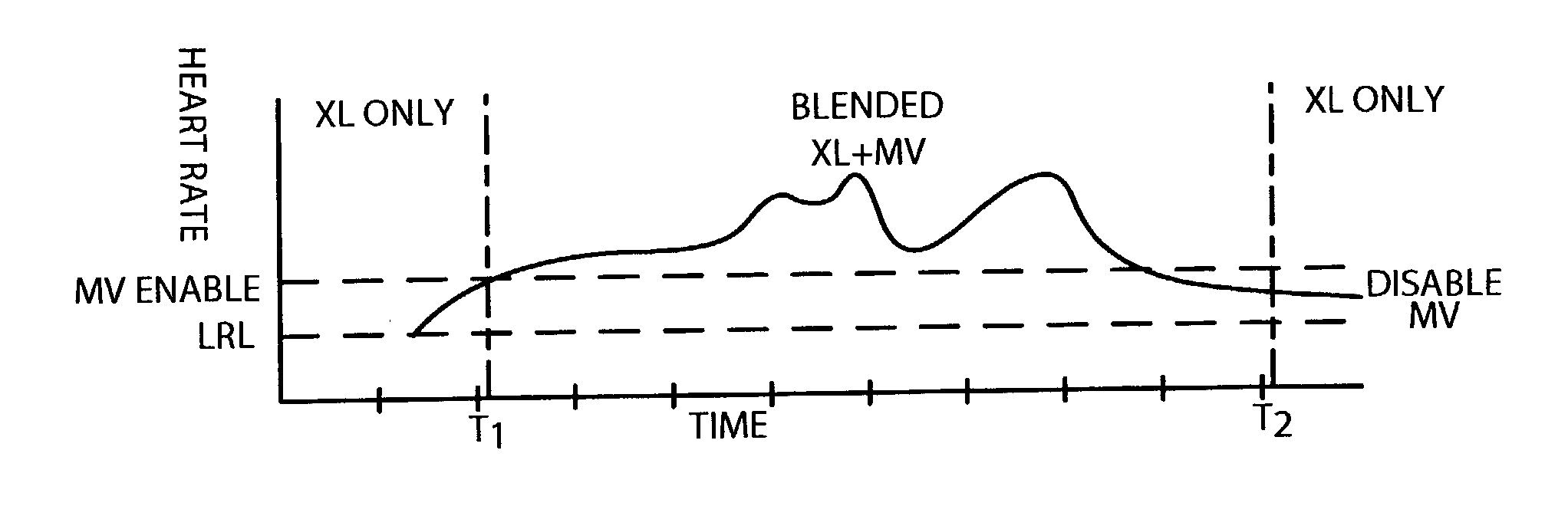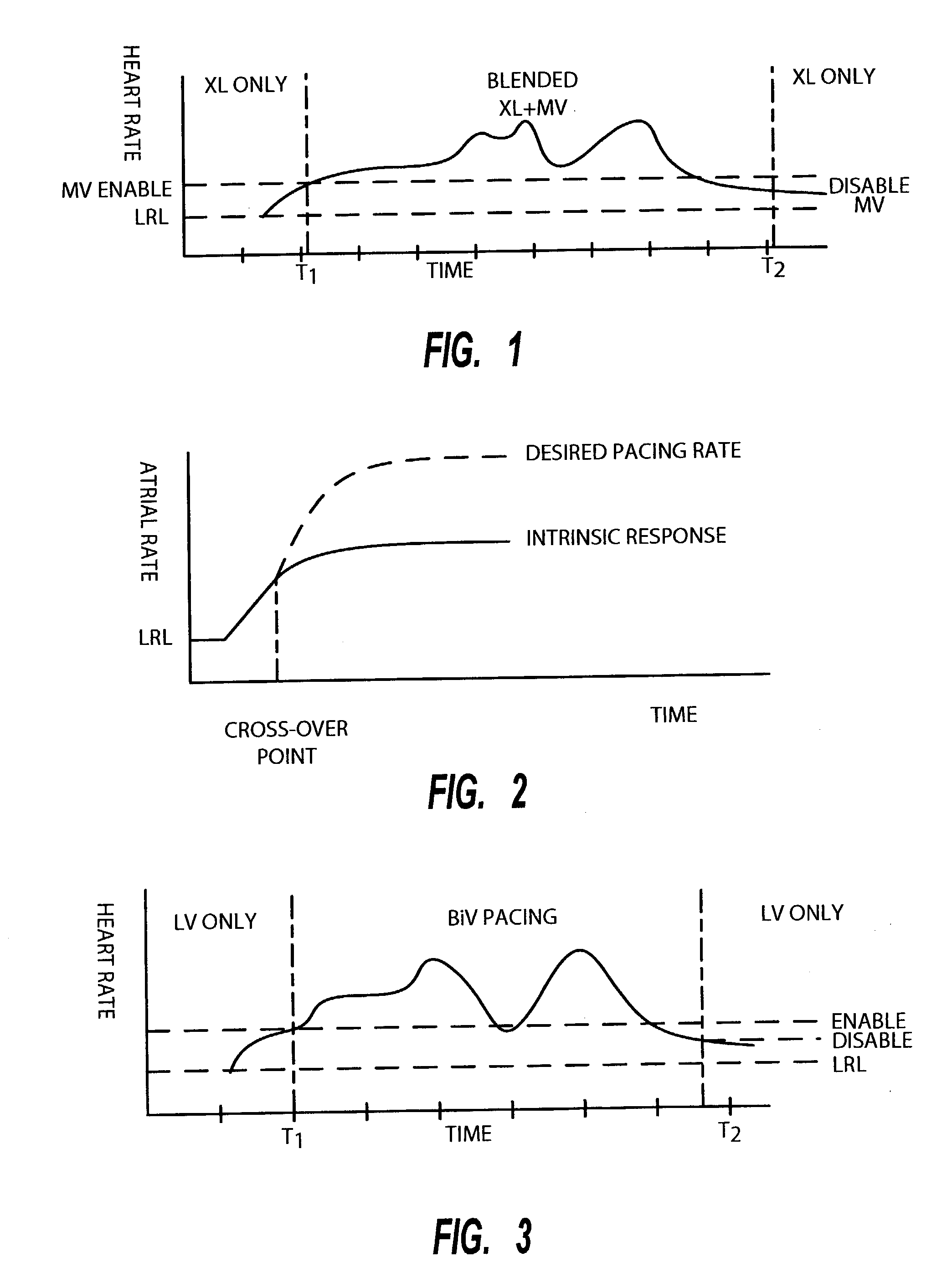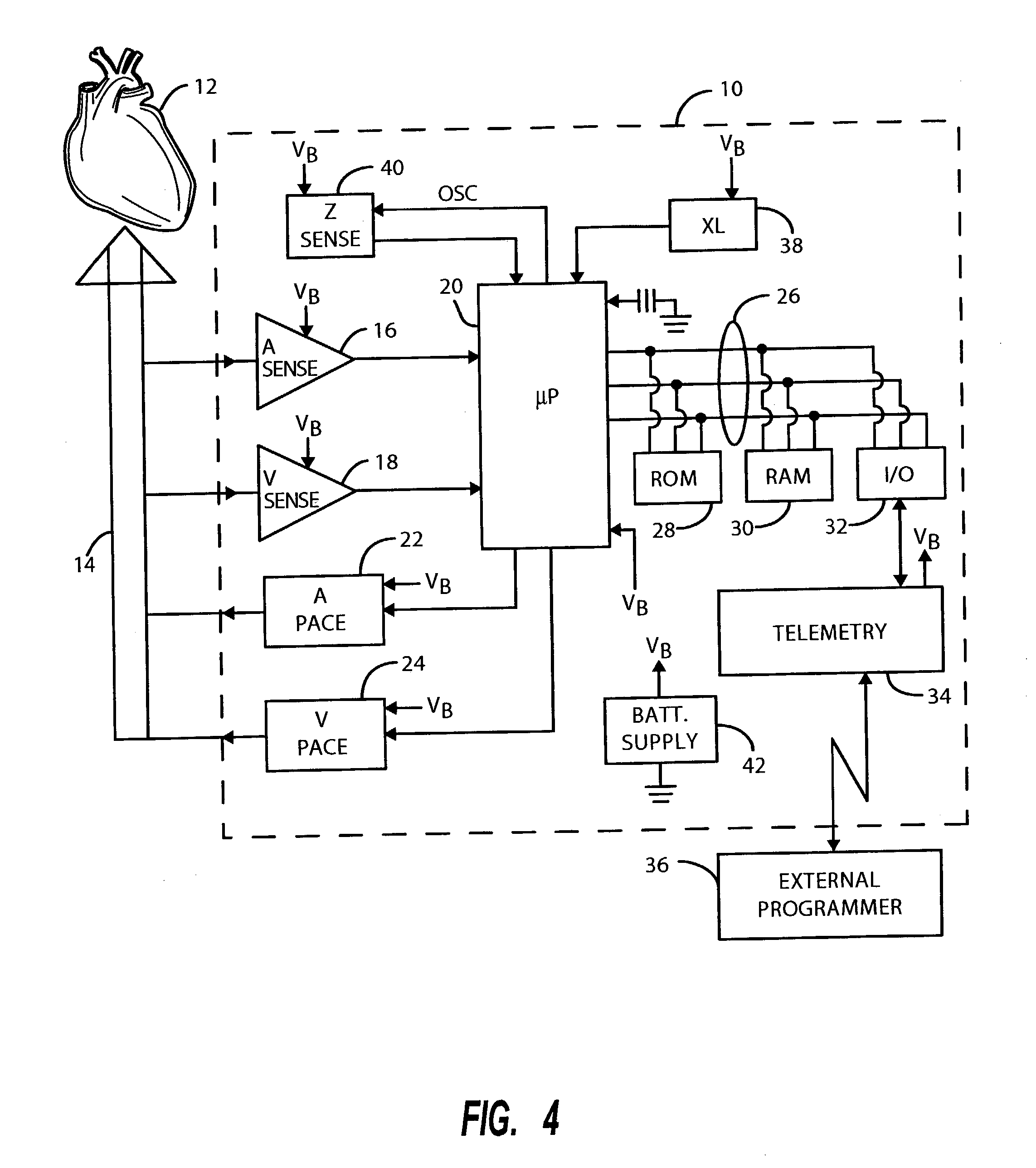Method of operating implantable medical devices to prolong battery life
a medical device and battery life technology, applied in electrotherapy, therapy, heart stimulators, etc., can solve problems such as increasing power consumption, and achieve the effect of increasing power consumption and prolonging the battery life of implantable medical devices
- Summary
- Abstract
- Description
- Claims
- Application Information
AI Technical Summary
Benefits of technology
Problems solved by technology
Method used
Image
Examples
Embodiment Construction
[0029]Referring first to FIG. 1, there is shown a plot of patient activity as measured by an accelerometer (XL) plotted against time as a level of exercise first increases and then subsequently decreases. Initially, with the patient at rest, the implanted cardiac stimulator will typically be pacing the patient's heart at a programmed lower rate limit (LRL). When the output from the accelerometer exceeds a threshold as at time, T1, power is applied to the device's minute ventilation sensing circuitry, at which point the control signal developed for modifying the pacing rate becomes a blend of the output from the accelerometer and an output from the minute ventilation sensor. Once the pacing rate drops below a second threshold at time, T2, the minute ventilation sensor is disabled (powered down) and, again, only the accelerometer is providing the rate controlling signal for the device's stimulating pulse generator. Thus, battery power is conserved so long as the patient's level of act...
PUM
 Login to View More
Login to View More Abstract
Description
Claims
Application Information
 Login to View More
Login to View More - R&D
- Intellectual Property
- Life Sciences
- Materials
- Tech Scout
- Unparalleled Data Quality
- Higher Quality Content
- 60% Fewer Hallucinations
Browse by: Latest US Patents, China's latest patents, Technical Efficacy Thesaurus, Application Domain, Technology Topic, Popular Technical Reports.
© 2025 PatSnap. All rights reserved.Legal|Privacy policy|Modern Slavery Act Transparency Statement|Sitemap|About US| Contact US: help@patsnap.com



